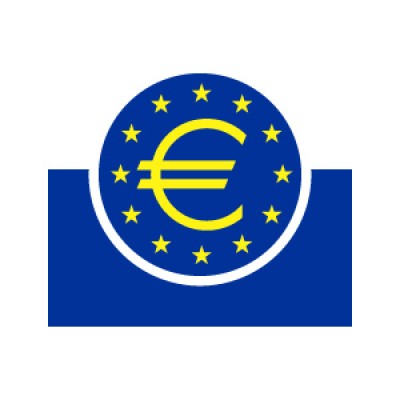Tariff Tango: The Market's Uneasy Waltz with Uncertainty
March 8, 2025, 4:07 am
In the world of finance, uncertainty is a storm cloud. It looms large, casting shadows over investors' hopes. Recently, that cloud has darkened as President Trump expanded his tariff pause on imports from Canada and Mexico. The catch? Only goods compliant with the United States-Mexico-Canada Agreement (USMCA) are spared. This reprieve, however, has not brought the relief investors craved. Instead, the Nasdaq Composite has stumbled into correction territory, shedding its post-election gains like autumn leaves.
The market's reaction is a tale of two narratives. On one hand, the tariff pause seemed like a lifeline. On the other, it feels like a double-edged sword. Investors are weary of the administration's erratic approach to tariffs. The promise of stability is overshadowed by the reality of ongoing trade tensions. The Nasdaq's decline—over 2.6%—is a stark reminder that markets can turn on a dime.
Trump's dismissal of market concerns adds fuel to the fire. He claims he’s “not even looking at the market.” This nonchalance is disconcerting for those who hoped for a safety net, a “Trump put” to cushion their investments. Meanwhile, Treasury Secretary Scott Bessent downplays the importance of “cheap goods” to the American dream. His comments suggest a shift in focus—tariffs are not just a tool for revenue but a means to protect American industries.
The tariff pause covers about 38% of Canadian imports and 50% of Mexican ones. It’s a temporary measure, lasting until April 2. Yet, the timing raises eyebrows. The U.S. is grappling with rising layoffs—172,017 announced in February alone, a staggering 245% increase from January. This surge is the highest since the pandemic's peak. Elon Musk's federal cuts account for a significant portion of these layoffs, a move that has Trump's backing. The job market is tightening, and the economic landscape is shifting.
The stock market's fatigue is palpable. The S&P 500 fell by 1.78%, and the Dow Jones Industrial Average dipped by 0.99%. Investors are growing weary of the constant tariff changes. The uncertainty is like a persistent drip, eroding confidence. The tech-heavy Nasdaq has erased all its post-election gains, a stark contrast to the optimism that once buoyed it.
Across the Atlantic, the European Central Bank (ECB) is also making waves. It cut interest rates by 25 basis points, signaling a shift towards less restrictive monetary policy. This move, anticipated by markets, reflects a broader trend of central banks adjusting to changing economic conditions. ECB President Christine Lagarde noted that no council members opposed the cut, although one governor abstained. The global financial landscape is shifting, and investors are taking note.
In the semiconductor sector, the outlook is grim. An ETF tracking semiconductor stocks has plummeted, down double digits in recent weeks. This downturn follows a remarkable 38.5% rise in 2024. The latest movements have formed a dreaded chart pattern, a warning sign for investors. The semiconductor industry, once a beacon of growth, now faces uncertainty.
As the dust settles, global bonds are reacting to the tariff news. Government borrowing costs are rising, with yields on German bonds spiking. The 10-year bund yield, a benchmark for the eurozone, has seen significant fluctuations. Deutsche Bank's research suggests that Germany's political shifts are fueling a greater appetite for riskier assets. Investors are recalibrating their strategies, navigating a landscape marked by volatility.
The interplay between tariffs and market performance is a delicate dance. Tariffs are intended to protect American jobs and industries, but they also carry risks. The recent layoffs highlight the fragility of the job market. As companies tighten their belts, the ripple effects are felt across the economy. The balance between protectionism and free trade is a tightrope walk, and the stakes are high.
In this uncertain environment, investors are left grappling with questions. Will the tariff pause provide the stability needed for recovery? Or will it exacerbate existing tensions and lead to further market declines? The answers remain elusive, hidden behind a veil of political maneuvering and economic shifts.
As we look ahead, the market's response to these developments will be crucial. Investors must remain vigilant, adapting to the ever-changing landscape. The storm clouds may linger, but within them lies the potential for clarity. In the world of finance, patience is a virtue. The dance continues, and only time will reveal the next steps.
The market's reaction is a tale of two narratives. On one hand, the tariff pause seemed like a lifeline. On the other, it feels like a double-edged sword. Investors are weary of the administration's erratic approach to tariffs. The promise of stability is overshadowed by the reality of ongoing trade tensions. The Nasdaq's decline—over 2.6%—is a stark reminder that markets can turn on a dime.
Trump's dismissal of market concerns adds fuel to the fire. He claims he’s “not even looking at the market.” This nonchalance is disconcerting for those who hoped for a safety net, a “Trump put” to cushion their investments. Meanwhile, Treasury Secretary Scott Bessent downplays the importance of “cheap goods” to the American dream. His comments suggest a shift in focus—tariffs are not just a tool for revenue but a means to protect American industries.
The tariff pause covers about 38% of Canadian imports and 50% of Mexican ones. It’s a temporary measure, lasting until April 2. Yet, the timing raises eyebrows. The U.S. is grappling with rising layoffs—172,017 announced in February alone, a staggering 245% increase from January. This surge is the highest since the pandemic's peak. Elon Musk's federal cuts account for a significant portion of these layoffs, a move that has Trump's backing. The job market is tightening, and the economic landscape is shifting.
The stock market's fatigue is palpable. The S&P 500 fell by 1.78%, and the Dow Jones Industrial Average dipped by 0.99%. Investors are growing weary of the constant tariff changes. The uncertainty is like a persistent drip, eroding confidence. The tech-heavy Nasdaq has erased all its post-election gains, a stark contrast to the optimism that once buoyed it.
Across the Atlantic, the European Central Bank (ECB) is also making waves. It cut interest rates by 25 basis points, signaling a shift towards less restrictive monetary policy. This move, anticipated by markets, reflects a broader trend of central banks adjusting to changing economic conditions. ECB President Christine Lagarde noted that no council members opposed the cut, although one governor abstained. The global financial landscape is shifting, and investors are taking note.
In the semiconductor sector, the outlook is grim. An ETF tracking semiconductor stocks has plummeted, down double digits in recent weeks. This downturn follows a remarkable 38.5% rise in 2024. The latest movements have formed a dreaded chart pattern, a warning sign for investors. The semiconductor industry, once a beacon of growth, now faces uncertainty.
As the dust settles, global bonds are reacting to the tariff news. Government borrowing costs are rising, with yields on German bonds spiking. The 10-year bund yield, a benchmark for the eurozone, has seen significant fluctuations. Deutsche Bank's research suggests that Germany's political shifts are fueling a greater appetite for riskier assets. Investors are recalibrating their strategies, navigating a landscape marked by volatility.
The interplay between tariffs and market performance is a delicate dance. Tariffs are intended to protect American jobs and industries, but they also carry risks. The recent layoffs highlight the fragility of the job market. As companies tighten their belts, the ripple effects are felt across the economy. The balance between protectionism and free trade is a tightrope walk, and the stakes are high.
In this uncertain environment, investors are left grappling with questions. Will the tariff pause provide the stability needed for recovery? Or will it exacerbate existing tensions and lead to further market declines? The answers remain elusive, hidden behind a veil of political maneuvering and economic shifts.
As we look ahead, the market's response to these developments will be crucial. Investors must remain vigilant, adapting to the ever-changing landscape. The storm clouds may linger, but within them lies the potential for clarity. In the world of finance, patience is a virtue. The dance continues, and only time will reveal the next steps.



